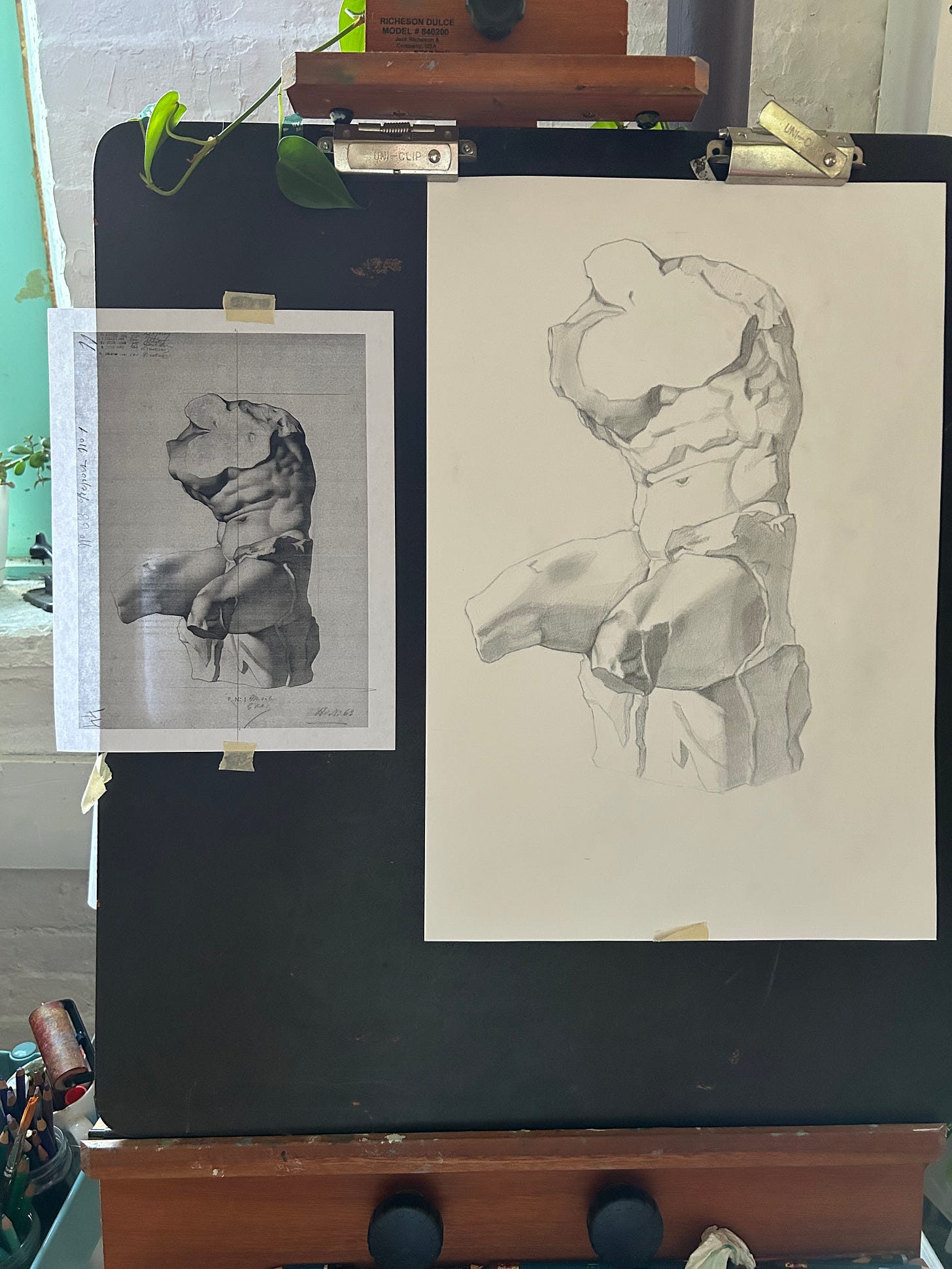Almost three years ago, I realized I’d hit a wall. My degree is in graphic design and I’m incredibly grateful for the formation I received. But fine art? Eh…
I think sometimes there’s a mistaken idea that illustrators, especially those working in the children’s field, can just get away with drawing “cute” stuff. You don’t really have to be able to draw, you can stylize the living daylights out of everything. But stylization requires a real understanding of what lays underneath. You can’t distill something unless you understand its essence first. And there were too many things I felt I didn’t understand well enough to interpret through illustration. The same issues were popping up in my drawings again and again and I needed to get back to basics.
So long story short, I’ve been working my way through Stephen Bauman’s online Atelier program here. If Atelier programs are unfamiliar, the 30 second definition is: an artistic formation that begins with the student copying simple plates, gradually progressing through more difficult examples, working their way through cast drawings before progressing to painting, etc. If you’re familiar with Bargue plates, you’re on the right track (speaking of which, here’s a great explanation of the value of those). I’m seriously condensing the scope of this kind of artistic formation. Seriously. But it’s a kind of program that really forces you to return to fundamentals. It’s slow moving and can be frustrating, but for me, it’s really paid off. How?
Atelier education requires you to slow down
Whether it’s rendering chunks of shadow or thinking about the trajectory of a curve, you can’t rush a plate copy. Your rush is your ruin, because:
Small Things Matter
One thing that’s fascinated me with this kind of drawing is how if just one line is incrementally off, the whole piece will eventually fall apart. You can’t fudge things with this way of making art; those early inaccuracies will come back to haunt you, big time.
Early Investments in Accuracy and Time Pay Off
I’ve found that with Bargue plates, me really, really taking the time to establish accuracy in form early makes the end go so much faster. If I’m using house building as an analogy, you want to spend a whole lot more time working on the foundation than you do painting window trim. You can have brilliant looking trim, but you’ll have a tilting floor and doors that won’t close if the foundation isn’t built well, early on. And then the trim will be, well, mostly pointless.
Here’s a collection of Bargue’s from 2022. I’ve been working since late winter on the Belvedere Torso (the first post on this image) and I’m about 80% of the way there. Part of me wishes I could start over because there’s so much I’d do differently. But Rome wasn’t built in a day.
Also…
I’m working on a few downloads for paying subscribers that I’ll have ready this autumn. I have an embroidery ready to go and a botanical motif freebie almost finished up.
And, if there’s an area of illustration, creativity or children’s literature I should write about, I’m all ears! I really want to write things here that are useful for anyone starting out or those who want to learn about the inner workings of illustration. So if there’s a topic you’d love for me to tackle, I’m open to it! Feel free to comment or email me here.





